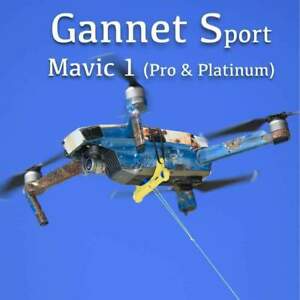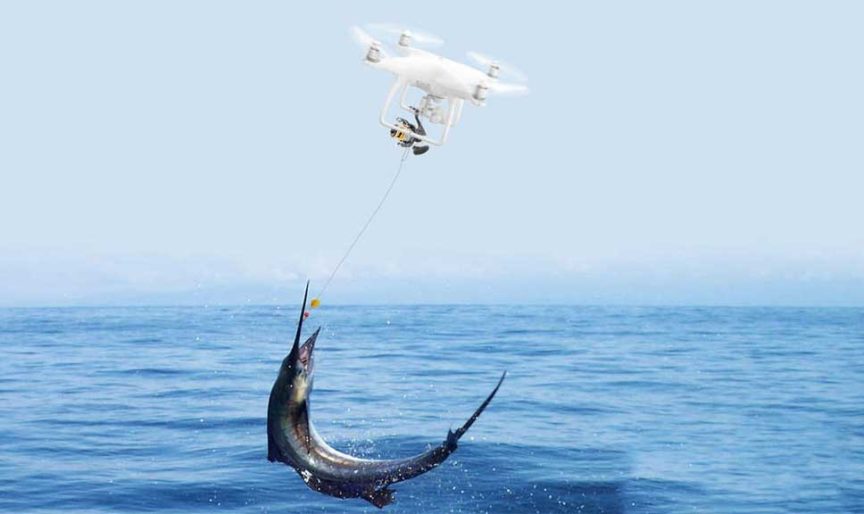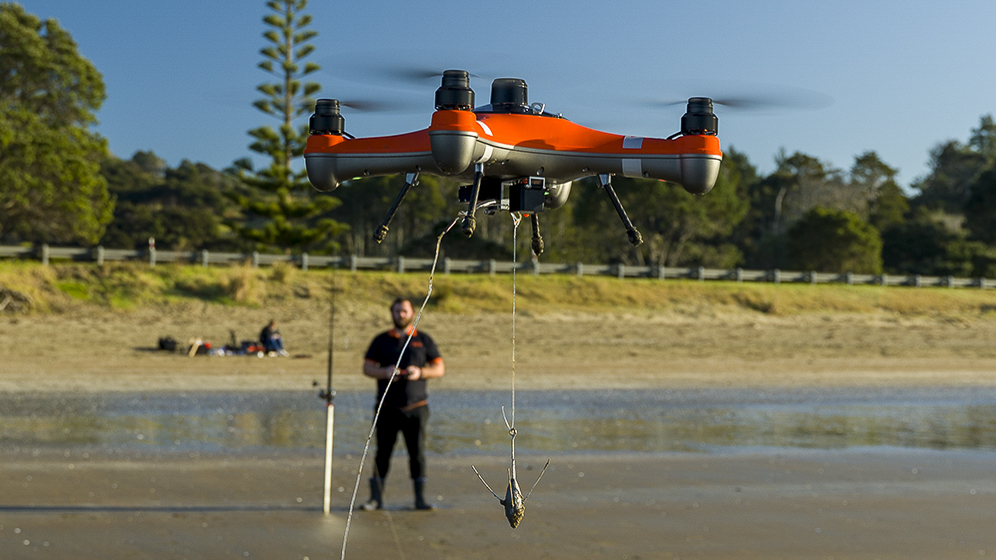
This article will cover the basics of a drone fishing device. We'll also talk about what to watch out for when you choose your drone, the battery life, and the payload. Next, we will discuss how to get the best drone. You'll find some great tips and tricks in the following sections. Soon you will have the drone of dreams! Let's get !... going and maybe even catch a few more fish!
Basic drone fishing rig
To begin drone fishing, you'll need a good selection of hooks. You should double the fishing line and use mono or braid. To attach a Cat's Paw Loop or Uni Knot to the line, you should tie it. A sinker, weighing between two to eight ounces, and hooks to attach each section to the backbone will be required. The final step is to attach the lead loop and end loop of your drone using a snap swivel.
There are many options for creating a fishing drone. An easy way to make a fishing drone is to attach a hook onto the drone's landing gear. Then spin the line until the line is released. Another low-cost option is to use a dropper and drop line. A dropper allows you to keep the main line below the drone without getting tangled with the propellers. The fishing drones can also be equipped with accessories, such as a battery pack and a dock.
Once you've purchased the basic drone fishing rig, you'll need to purchase some additional equipment. A long fishing line (approximately 700m) and a bait-dropping device are essential. These are optional, but they will make drone fishing more fun. A drone can give you a better view of the surroundings and help you spot fish easier.

Payload for drone fishing rig
If you're planning on catching a fish using a drone, you need to be aware of the safety measures that need to be taken. You should never fly your drone in strong winds or rain. Here are some steps:
First, ensure your drone has a strong carrying capacity. If you load it with heavy lures and braided line, it will not be stable. Also, if you're fishing at a seaside location, the wind may blow the drone off its course. It is important to review local regulations and laws. Some may not allow you to fish from a drone. You need to ensure that your drone is strong enough to carry you when you go fishing.
Next is to determine what accessories you will need to mount to your drone. To reduce weight distribution problems, a good rule of thumb is that your rigging system should have a central attachment. The most suitable attachment points are the motor struts, landing gear, and legs of the drone. Payloads attached to the camera and/or gimbal can cause damage. The easiest solution is to tie some fishing line along the length from one corner to another. Tape can be used to keep it from falling apart.
The battery life of drone fishing rigs
Be sure to check the batteries, and other gear before you go out fishing with your drone. This will help you keep the drone from running out of battery life and allowing you to focus on fishing instead of recharging. You can charge some drones with solar panels or car batteries. It is a good idea to start with fully charged batteries. This will ensure your drone is ready to fly when you reach your fishing spot.

Another important factor to consider is the drone's flight time. There are some models that have longer flight time than others. However, a drone with a flight time of twenty-two minutes is sufficient to get the job done. This is great for those who want to spend hours out on the water with their drone. A drone that has limited endurance is likely to be unusable and renders it impossible to catch fish.
After setting up your fishing rod, attach the fishing clip to the drone's legs or motor struts. Attach the bait to the fishing rod. Be sure to lock the reel before you fly the drone and unlock it when you're ready to drop the bait. You will feel tension build up when the line is pulled out. The drone will then drop the bait into water. You should charge the battery every time you use it, otherwise it might not function properly.
FAQ
How high can you fly a drone without a license?
The FAA has no limits on the maximum height a drone can fly. They do require that you register your unmanned airplane system (UAS), which includes registration number, model number, weight, size and manufacturer's names, as well as other information.
Is it possible to fly my drone in a local park?
Yes, you can fly drones in parks throughout the world. Due to safety concerns, certain countries don't allow you to fly drones in parks. Check out our list of places where you can legally fly drones for fun.
Do I need special training to fly a drone?
No, you don't need special training to fly your drone. You will only need a remote control unit, and some knowledge about flight mechanics.
What is the difference of a quadcopter and an hexacopter, you ask?
Quadcopters are four-rotor helicopters that fly like traditional helicopters. It has four rotating rotors. The quadcopter's quadcopter counterpart, the hexacopter, has six instead of four. Hexacopters have more stability and maneuverability than quadcopters.
What is the best drone to buy for beginners?
One of the most popular beginner drones is the DJI Phantom 2 Vision+. This drone comes with a 4K camera which can be used to take aerial photos and videos. This drone is easy to navigate thanks to its GPS system.
Statistics
- According to ZipRecruiter, the minimum hourly wage of drone pilots is $20. (thedroneu.com)
- With the top 10% making over $100/h and the bottom 10% making as low as $10/h. (dronesgator.com)
- According to the multiple listing service (MLS), houses and apartments with drone photographs are up to 68 percent more likely to sell than those without pictures. (thedroneu.com)
External Links
How To
How To Fly Drones For Beginners
A drone refers to a remote-controlled aircraft designed for aerial photography, surveillance and scientific research. Drone technology has existed since World War II. DJI's Phantom quadcopters became commercially available in 2010. There have been many types of drones since then, including beginner-friendly drones like the Parrot AR Drone 2.0 and professional-grade multi-rotor crafts like the DJI Mavic Pro.
There are several ways to fly a drone, including;
-
Remote control – This technique uses a control device attached directly to your hands that allows you steer the drone around its flight path. There are two main types for controllers: Joysticks or On/Off switches, which can be used to control the drone's flight path.
-
Manual Control – This allows remote operation of the drone via GPS coordinates using a smartphone application. You will need to keep track of where the drone is going and follow the directions from the app.
-
Autonomous Flight - This method involves leaving the piloting duties to the drone itself. It's basically flying autonomously without any human intervention. The drone must be equipped with a camera and sensors that can capture images and data in order to fly autonomously.
-
Triggered Flight - This method is similar to manual control, except the pilot manually sets up a preprogrammed route, and the drone follows that route until it reaches the endpoint. Once the programmed route has been completed, the drone returns to the base automatically.
-
Landing Gear – Some drones are equipped with landing gear, which allows them to safely land if they lose power during flight.
-
Goggles - Some pilots wear goggles to protect themselves from debris while operating.
-
Camera - You can capture photos and videos with your drone from the air.
-
Obstacles: Some drones are equipped with obstacle avoidance systems to prevent them from hitting obstacles.
-
Speed - Drones can reach speeds up to 40 mph.
-
Battery Life - Most drones last between 20 and 3 hours depending on how much power they have.
-
Range - Depending on the model, some drones can travel up to 30 miles away.
-
Power source - Not all drones can use an external power source. Others can run on internal batteries.
-
Weight - Some drones weigh less than 1 pound, whereas other models weigh up to 4 pounds.
-
Size - From small drones that can be carried in the palm of one's hand to larger drones that weigh over 50 pounds, drones come in a variety of sizes.
-
Price - From high-end models that cost thousands of dollars to low-cost options that start at $100, all drones fall under a certain price category.